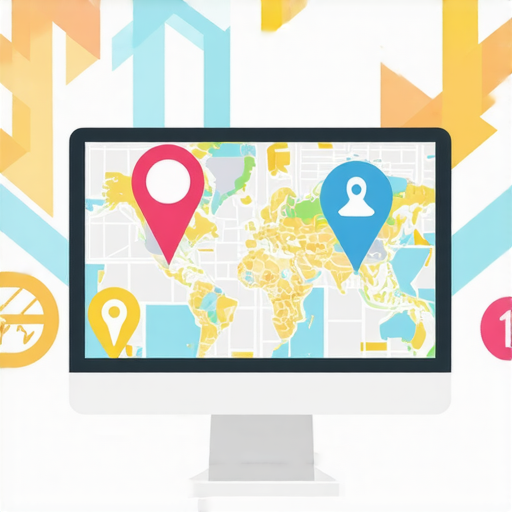My Journey into CTR SEO and Local Engagement
When I first started exploring local SEO, I was overwhelmed by the sheer amount of strategies out there. I remember spending countless hours tweaking my website and optimizing my Google My Business profile, hoping to see some tangible results. It wasn’t until I immersed myself in understanding the power of Click-Through Rate (CTR) optimization that I began to notice a real change in my local engagement. Today, I want to share some of my personal insights on how effective CTR SEO strategies can truly maximize local presence in 2025.
Why CTR Optimization Became My Secret Weapon
Early on, I learned from reputable sources like Mastering CTR SEO that a high CTR signals to Google that your listing or content is relevant and valuable. This motivated me to focus not just on rankings but on enticing users to click through. I experimented with compelling titles, enticing meta descriptions, and localized keywords to make my listings more attractive.
Personal Tactics That Made a Difference
One tactic that really worked for me was leveraging local keywords naturally within my content. For example, instead of generic phrases, I used specific terms like “best Italian restaurant in downtown Chicago” which resonated with my target audience. Additionally, I paid close attention to my snippets, making sure they were clear, informative, and enticing. I also found that adding call-to-actions (CTAs) within my meta descriptions increased my CTR significantly.
How to Keep Your Audience Engaged
Engagement signals such as time on page, bounce rate, and social shares are crucial for local SEO success. I realized that creating content that answers real questions—like local reviews, success stories, or behind-the-scenes looks—can foster trust and prompt users to interact more. For instance, sharing a personal story about how I helped a local client boost their visibility made my content more relatable and shareable. For more detailed strategies, I recommend exploring Effective CTR SEO Strategies.
Does CTR Optimization Really Impact Local Rankings?
What’s the real connection between CTR and local ranking improvements?
It’s a question I’ve asked myself many times. Based on my experience, a higher CTR doesn’t just bring more clicks; it sends strong signals to Google that your listing is relevant and authoritative, which can lead to improved rankings over time. Google’s algorithms are increasingly sophisticated in interpreting user behavior, and CTR is a key metric they consider. This understanding prompted me to continually refine my titles and descriptions, making sure they are both appealing and accurate.
If you’re serious about boosting your local visibility, I encourage you to test different strategies and track your results. Remember, what works for one niche or location might not work for another. Always keep an eye on analytics and be ready to adapt.
Lastly, I invite you to share your own experiences or ask questions in the comments. Collaboration and shared insights can accelerate our collective success in local SEO.
Ready to dive deeper? Check out expert tips to maximize your CTR and take your local engagement to the next level!
Decoding the Psychology Behind Click-Through Rate Optimization
Understanding why users click is as crucial as knowing how to optimize for CTR. Experts suggest that emotional appeal, clarity, and relevance are key drivers. Effective CTR SEO emphasizes crafting snippets that directly address user intent, leveraging power words, and incorporating local cues that resonate emotionally. For instance, using localized phrases like “Your neighborhood’s trusted plumber” can significantly increase engagement by appealing to community pride and trust.
How Can Localized Content Boost User Engagement and Search Rankings?
Localized content is not just about inserting city names; it’s about creating meaningful connections with your audience. Tailoring your content to reflect local events, landmarks, or dialects makes your listings more relatable and trustworthy. This approach boosts engagement signals such as time on page and social sharing, which Google interprets as indicators of relevance and authority. For example, a blog post about “Top 5 Attractions Near Central Park” can attract local visitors and generate organic backlinks, further enhancing your local SEO efforts.
Imagine an engaging infographic illustrating the interplay of CTR, engagement signals, and local ranking factors—visual content can be a powerful tool to educate your audience and boost interaction.
What Are the Practical Challenges in Implementing CTR and Engagement Strategies?
While the theory is straightforward, applying these strategies in real-world scenarios involves navigating challenges like competition saturation, algorithm updates, and user behavior diversity. For instance, in highly competitive local markets, small adjustments in your meta descriptions or snippets might not yield immediate results. Staying updated with latest CTR SEO techniques can provide a competitive edge. Moreover, continuously testing and analyzing your data is essential to refine your approach and adapt to evolving search engine algorithms.
How Can I Use Engagement Signals to Fine-Tune My Local SEO Campaigns?
Monitoring metrics such as bounce rate, click duration, and social shares offers invaluable insights into your audience’s preferences. These signals help you identify which content resonates and which needs improvement. For example, if a particular blog post about “Best Coffee Shops in Downtown” garners high social shares but low click-throughs, it indicates a need to optimize your meta descriptions or headline to better align with what users seek. Tools like Google Analytics and specialized SEO platforms can help track these metrics effectively.
To deepen your understanding and stay ahead in the local SEO game, I recommend exploring proven tactics for local ranking and regularly testing your strategies to discover what works best for your unique audience. Sharing your experiences or questions in comments can also foster community learning and practical insights.
Embracing the Nuances of User Psychology in CTR Optimization
Over the years, I’ve realized that understanding the psychology behind user clicks elevates your SEO game from mere technical tweaks to a more intuitive art. When I first delved into this, I was struck by how small shifts in wording or imagery could dramatically influence user behavior. For example, incorporating power words like “exclusive” or “trusted” in your snippets can evoke a sense of reliability and urgency that compels clicks. I remember experimenting with different phrasing, such as “Discover the Best Local Plumber Near You” versus “Your Neighborhood’s Trusted Plumbing Experts,” and the latter consistently outperformed in CTR. This insight aligns with findings from Effective CTR SEO, emphasizing the importance of emotional appeal and relevance. As I continued refining my approach, I learned that localized cues—like mentioning landmarks or community pride—resonate deeply, fostering a sense of trust and immediacy that motivates users to click. Understanding these psychological triggers has allowed me to craft snippets that not only attract clicks but also set the stage for meaningful engagement.
How Can Localized Content Deepen User Engagement and Drive Rankings?
Creating localized content isn’t just about sprinkling city names into your pages; it’s about weaving a narrative that truly connects with your community. I’ve found that sharing stories about local events, success stories of local clients, or behind-the-scenes glimpses of your business fosters authenticity. For instance, a blog post about “How We Helped a Local Business Flourish” can establish credibility and encourage social sharing, which in turn signals relevance to Google. Additionally, integrating local dialects or references to neighborhood traditions can make your content more relatable. This approach not only boosts engagement signals like time on page and social shares but also enhances your visibility in local searches. I’ve seen firsthand how this strategy creates a ripple effect—improving rankings and building a loyal customer base—especially when combined with effective CTR tactics. For a comprehensive guide, I recommend exploring proven tactics for local ranking.
What Are the Most Common Pitfalls in Implementing Engagement Strategies, and How Can You Overcome Them?
Implementing these strategies in real-world scenarios often uncovers unexpected hurdles. One common challenge I faced was over-saturation—many businesses in my niche were vying for the same keywords and local prominence. This meant that minor adjustments in meta descriptions or snippets sometimes yielded minimal results initially. To overcome this, I focused on continuous testing and leveraging analytics to identify what truly resonated with my audience. I also learned the importance of keeping content fresh and contextually relevant, especially during local events or seasonal shifts. Moreover, algorithm updates can often disrupt established strategies, requiring agility and ongoing education. I stay updated with latest CTR SEO techniques to ensure my tactics remain effective. Patience and persistence are key—monitoring engagement metrics like bounce rate and social shares helps refine your approach. Remember, the goal is to develop a nuanced understanding of your audience’s evolving preferences and adapt your strategies accordingly.
How Do Engagement Signals Complement CTR in Building a Robust Local SEO Profile?
Engagement signals such as time on page, bounce rates, and social shares serve as the feedback loop for your CTR efforts. In my experience, high CTR combined with positive engagement signals creates a compelling narrative for Google, indicating that your content is both attractive and valuable. For example, a high bounce rate might suggest your meta description was enticing, but your landing page didn’t meet expectations. Conversely, long dwell times and social sharing demonstrate that users find your content trustworthy and engaging. To fine-tune my campaigns, I regularly analyze these metrics using tools like Google Analytics and specialized SEO platforms. This data-driven approach allows me to identify which snippets, content topics, or local cues are most effective, leading to more refined and targeted strategies. For further insights, I recommend exploring data-driven engagement strategies. I encourage you—share your own experiences or ask questions below. Collaborating with others can reveal new angles and accelerate our collective success in local SEO.
Harnessing Psychological Triggers for Hyper-Targeted Local Engagement
One of the most nuanced aspects of my journey has been mastering the subtle art of psychological influence in snippet optimization. Beyond power words and emotional cues, I delve into the cognitive biases that drive user behavior. For instance, leveraging the scarcity principle—highlighting limited-time offers or exclusive services—can significantly boost CTR. I experimented with phrases like “Limited Slots Available” or “Exclusive Local Offer” to tap into the FOMO effect, which often led to a noticeable uptick in clicks. This approach aligns with research from Psychology Today, emphasizing how scarcity and urgency influence decision-making. Integrating these insights into your snippets requires a strategic balance—overdoing it risks appearing pushy, but when done authentically, it can dramatically improve local engagement.
Leveraging Data Analytics for Precision in Local SEO Campaigns
As my expertise matured, I realized that data-driven decision-making is pivotal. Using advanced analytics tools, I segmented my audience based on behavior patterns, device types, and local preferences. For instance, I discovered that mobile users in certain neighborhoods responded better to shorter, punchier titles, while desktop users favored detailed descriptions. This granular approach allowed me to tailor my meta descriptions and snippets more effectively, leading to higher CTRs and engagement. Moreover, by analyzing heatmaps and scroll depth reports, I identified which parts of my landing pages maintained user interest, enabling me to optimize content flow for maximum retention. For deeper insights, I highly recommend exploring how data can fine-tune your SEO efforts. Remember, continuous testing and iteration are the cornerstones of sustained success in this dynamic landscape.
Can Personalization Truly Elevate Your Local SEO Performance?
Personalization has been a game-changer in my strategy. By customizing snippets based on user location, search intent, and behavior, I created a more relevant experience that resonates on a personal level. For example, showing different call-to-actions for users searching for “best pizza near me” versus “top-rated Italian restaurants” allows me to align my messaging precisely. Utilizing tools that analyze past interactions, I dynamically adjust snippets to reflect user preferences, making my listings stand out amidst intense competition. This approach is supported by emerging research in Search Engine Land, which highlights how personalization influences user trust and engagement. The challenge lies in balancing personalization with privacy considerations, but when executed ethically, it can dramatically enhance your local ranking and user loyalty. I encourage you to experiment with personalized snippets and observe their impact on your CTR and engagement metrics—your insights could redefine your local SEO success.
How Do Voice Search and AI Personalization Reshape CTR Optimization in Local SEO?
The advent of voice search and AI-driven personalization is revolutionizing how users discover local businesses. In my experience, optimizing for voice queries involves understanding natural language patterns and conversational phrases. For example, instead of optimizing for “best plumber,” I focus on long-tail, question-based keywords like “Who is the most trusted plumber near me for emergency repairs?” This subtle shift aligns with how voice assistants interpret queries, resulting in higher visibility in voice search results. Additionally, AI personalization tools now allow me to serve hyper-localized content dynamically, based on real-time user data. This not only improves CTR but also enhances overall engagement by providing precisely what users seek before they even articulate it. According to Search Engine Land, embracing voice search optimization and AI-driven personalization is essential for maintaining competitive edge in local SEO. I recommend integrating these technologies into your strategy and continuously refining your approach through data analysis and user feedback—this is the frontier of local search dominance in 2025.
Things I Wish I Knew Earlier (or You Might Find Surprising)
The Hidden Impact of Small Tweaks
One of the most eye-opening lessons I learned was how minor adjustments in meta descriptions or titles could dramatically boost my CTR. It’s easy to overlook these details, but they can be game-changers for local visibility.
Relevance Over Rank
Initially, I chased rankings obsessively, but I realized that relevance and user engagement are what truly matter. A high CTR signals to Google that your listing resonates with users, often leading to better rankings over time.
The Emotional Connection
Crafting snippets with emotional triggers and local cues creates a sense of trust and urgency. Using community-specific language or power words like “trusted” or “exclusive” can make your listing stand out.
Data-Driven Adjustments Are Key
Tracking engagement metrics like bounce rate and dwell time helps refine your snippets. Regular analysis ensures your CTR strategies evolve with user behavior and search trends.
Localization Is More Than Keywords
Creating content that reflects local events, landmarks, or dialects fosters genuine connections. This boosts engagement signals and enhances your local SEO efforts beyond just inserting city names.
Resources I’ve Come to Trust Over Time
- Google’s Official SEO Starter Guide: A comprehensive resource that helped me understand fundamental SEO principles. Highly recommended for newcomers.
- Backlinko: Brian Dean’s insights on CTR and engagement strategies are practical and backed by data—definitely worth exploring.
- Search Engine Journal: Offers in-depth articles on latest SEO trends, including CTR optimization techniques that keep me updated.
- Local SEO Guide by Moz: An excellent resource for understanding localized content and ranking factors, which complements CTR strategies well.
Parting Thoughts from My Perspective
Looking back, mastering Click-Through Rate SEO has been a transformative experience in my local marketing journey. It’s incredible how small, deliberate changes can lead to significant improvements in visibility and engagement. In 2025, I believe that focusing on relevance, emotional appeal, and continuous data analysis will remain crucial for local success. If you’re serious about elevating your local presence, I encourage you to experiment with your snippets, monitor your metrics, and stay adaptable. Remember, the most effective strategies are those rooted in understanding your audience’s psychology and local context. If this resonated with you, I’d love to hear your thoughts. Feel free to share your own experiences or ask questions below, and let’s grow together in this dynamic SEO landscape.


